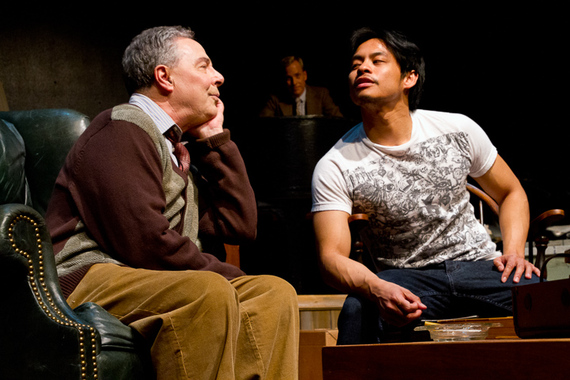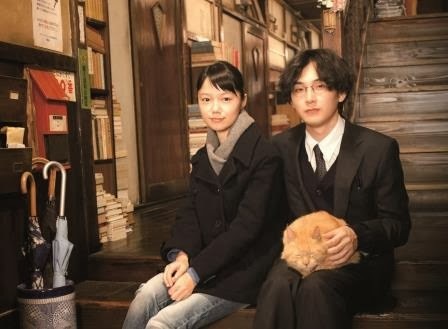When people think about artistic achievement, many focus on an individual's triumph in winning an award, a trophy, or some honor to recognize his talent, effort, and skill. The truth, however, is that the road leading up to that person's moment of glory was paved with the input and contributions of many others. If you don't believe me, try listening to a series of acceptance speeches from the Tony, Emmy, Golden Globe, or Academy Awards ceremonies.
In her 1996 book, It Takes a Village: And Other Lessons Children Teach Us, Hillary Rodham Clinton tried to show how, for better or worse, many people outside the nuclear family can influence a child's growth and behavior. While most folks are quick to recognize the kind of teamwork that leads to victory in sports or politics, few grasp the collaborative effort required to bring many forms of art to fruition.
From the intimate communication required between a recitalist and accompanist to the full-throttle grandeur of Brunnhilde's immolation scene at the end of Der Ring des Nibelungen (when a soprano's voice must carry over the sound of a large, Wagnerian orchestra); from the sensitive ensemble work of a string quartet to the full impact of an orchestra, soloists, and chorus performing the final movement of Beethoven's Ninth Symphony, a great deal of rehearsal, discipline, informed choices, and collegiality is required to deliver an ideal musical experience.
Two new productions focus on the teamwork that goes into bringing a piece of art to life. While their stories take place on different continents, in different eras, and within vastly different cultures, each work manages to shine a light on the need for cooperation and attention to detail.
* * * * * * * * * *
Theatre Rhinoceros recently presented the Bay Area premiere of Alan Bennett's play, The Habit of Art (2009). In the following video clip, Bennett describes some of the inspiration for his play, how he arrived at the play's peculiar dramatic structure, and explains how the character of Stuart (the young rent boy) embodies some of his early (albeit nonsexual) emotions as an undergraduate at Oxford.
Some may say that Bennett's drama employs the old play within a play gimmick, but he takes matters much further than that. Several actors pretend to be a talking chair, bed, and mirror. At one point, an actor in rehearsal has a hissy fit after being referred to as "a device."
With Tamar Cohn doing double duty as Kay (the stage manager) and a talking chair -- and Kathryn Wood appearing as George (an assistant stage manager) -- the supporting cast includes the following actors:
- Seth Siegel appears as Charlie, a young actor portraying a rather clueless boy soprano working with Benjamin Britten.
- Michael DeMartini appears as Neil, who portrays a frustrated playwright struggling to cope with a group of actors in rehearsals (who are doing a stunning job of trashing his play) while he is commuting between Leeds and several other cities.
- Craig Souza appears as Donald, the actor who portrays Humphrey Carpenter (the author who would eventually write biographies of both W. H. Auden and Benjamin Britten). In a curious turn as an actor trying to puff up his role, Souza appears in drag while attempting to play a sousaphone.
- Justin Lucas appears as Tim, the actor who portrays a young hustler hired by Auden for some casual sex.
Justin Lucas as Tim in The Habit of Art
(Photo by: Kent Taylor)
The two meatiest roles are reserved for the men portraying the actors attempting to play two of Britain's greatest 20th century creative artists. Each grew up during a time when homosexuality was barely mentionable in public; when their attraction to younger men showed up in their art in ways that might have surprised them.
- John Fisher appears as Henry, the actor portraying Benjamin Britten, whose most powerful operas -- Peter Grimes (1945), Billy Budd (1951), and Death in Venice (1973) -- had strong undercurrents of repressed homosexual lust.
- Donald Currie appears as Fitz, a popular voice-over artist who is attempting to sink his teeth into the role of Auden. As Fitz, he is nervous and crotchety about receiving changes in text and stage directions; as Auden he is an aging poet in the early stages of dementia who is prone to perseveration.
I found the structure of Bennett's play to be a refreshing challenge for the audience, which allows them to contrast each actor's inner thoughts with the thoughts and emotions of characters they portray. While Justin Lucas gets a rare chance to ruminate on whether the clients of the rent boy he is portraying might be famous (or someone he could tell his grandchildren about), his approach to giving his clients what they want often delivers unexpected comic moments as he attempts to deal with an eccentric old man whose impending dementia and obsession with time could frustrate the most accommodating hustler.
W. H. Auden (Donald Currie) and Stuart (Justin Lucas) talk
about cock in The Habit of Art (Photo by: Kent Taylor)
Without doubt, the evening belongs to Donald Currie, who gives a glowing performance as Fitz/Auden (even when it requires him to don an ape-like mask that can suggest the aging poet's heavily wrinkled face.
In recent years, I've found myself having increased difficulty when forced to listen to music while someone is speaking (I can no longer process both forms of communication simultaneously). Thus, in a key moment when Auden was reciting his lengthy poem entitled "The Sea and the Mirror" (1942), the music from one of the sea interludes Britten composed for Peter Grimes was competing for my attention. Because I love that music so much, I don't think I heard a word of Auden's poem. Listen to the following performance of all four sea interludes and I'm sure you'll understand why.
* * * * * * * * * *
I'm a sucker for the kind of movie that has no explosions, no car chases, and no CGI scripting. Instead, this kind of film tells a story about real people with an emotional acuity that quietly disarms the viewer and seduces him into following a slow-moving story to its end.
Yuya Ishii's delightful new film, The Great Passage (which was screened at CAAMFest 2014) is a joy from start to finish. Bottom line? I can't recommend it strongly enough.
Ishii's protagonist, Mitsuya Majime (Ryuhei Matsuda), is a painfully shy introvert with limited social skills who loves to read. As the film begins, he is failing spectacularly as a sales executive for a Tokyo publishing house.
Majime lives at the Sou-Un-Sou Rooming House, where his closest friends are the elderly landlady, (Misako Watanabe), her fat cat named Tora-san, and the piles of books that fill his room. With his post-graduate degree in linguistics, Majime soon attracts the attention of Masashi Nishioka (Joe Odagiri), whose editor, Kouhei Araki (Kaoru Kobayashi), is eager to retire so that he can spend more time at home caring for his ailing wife.
It's 1995 and, with the Internet growing in importance as a research tool, the publishing firm's dictionary department could easily become irrelevant in the growing presence of online databases. The only way to save the dictionary department is to come up with a revolutionary new project.
The editorial team eventually decides to create a new dictionary ("The Great Passage") which will take several years and long hours of teamwork to complete. Majime's new boss, chief editor Tomohiro Matsumoto (Go Kato), describes the project as a modern "living dictionary" which (as opposed to standard dictionaries) will include new terminology, Japanese slang, and the spoken vernacular.
Kaguya Hayashi (Aoi Miyazaki) and the shy dictionary editor
Mitsuya Majime (Ryuhei Matsuda) fall in love in The Great Passage
Working with a script by Kensaku Watanabe (which was adapted from Shiwon Miura's novel), Ishii's film also follows the budding romance between the shy Majime and his landlady's granddaughter, Kaguya Hayashi (Aoi Miyazaki), who is determined to be taken seriously as a chef in a profession dominated by Japanese men.
After 15 years of work (with a few deadline-related setbacks), The Great Passage is ready for publication. By this time, Matsumoto has taken ill and been confined to his home. He and his wife, Chie (Kaoru Yachigusa), are occasionally visited by Majime and Kaguya. On one of their last visits, Matsumoto asks the mature Majime to write a contemporary definition for the word "love" to be included in the new dictionary.
Kaguya Hayashi (Aoi Miyazaki) and the shy dictionary editor
Mitsuya Majime (Ryuhei Matsuda) fall in love in The Great Passage
The Great Passage is one of those gentle gems that takes viewers into a world where words are far more powerful than guns or money and a person's eccentricities are what make him most appealing (from both a personal and professional perspective). Here's the trailer:
To read more of George Heymont go to My Cultural Landscape




